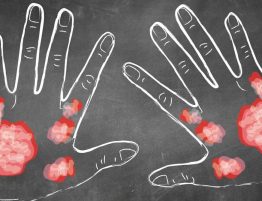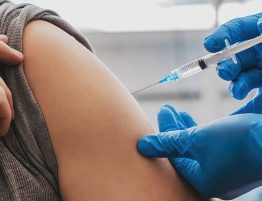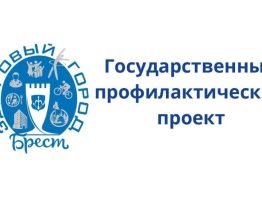
How to protect against arthropods and prevent diseases of tick-borne infections?
Most effective implementation of sanitary and preventive measures: cleaning of dried grass, removal of leaves and walrus, clearing of shrubs, cleaning of dumps and mounds in the yard areas, summer plots, systematic measures to combat rodents, Treatment of areas against ticks. It is necessary to protect yourself from ticks during the rest in the forest, when performing work on home and cottage plots: wear clothes that protect the body as much as possible, head cover, use repellents – means that scare off ticks. They can be purchased in pharmacies and in the retail network.
Children are particularly vulnerable to ticks not only because of their small size and the fact that they can’t always tell us about their discomfort but also because children are extremely inquisitive. They always strive to meet the new and the unknown – even if it is dangerous. If you decide to go for a walk in the woods or in the park with a baby who can not yet safely walk on his own you need to carry him in your arms or carry him in strollers. When walking you should move in the center of the tracks trying not to hit the grass and bushes growing on the edges. It is possible to pretreat the lower parts of the stroller with a special acaricidal means for protection against mites, so that the ticks cannot crawl on the wheels and other details of the stroller to the child. The safety of young children in areas where there is a risk of ticks is the responsibility of their accompanying adults. Older children need to be taught the principles of behavior in a dangerous area with respect to ticks. Children’s clothes are treated with aerosol agents only adults in accordance with the rules set out on the labels to the product.
What to do if the tick is still stuck?
First of all, you need to remove the tick. It is better if you have a surgeon or traumatologist who can be consulted by any health care provider in your area. If there is no possibility for immediate referral to a medical institution, you can remove the tick yourself using tweezers or a loop of cotton thread. The tick must be captured as close to the trunk as possible. Then carefully remove it, rotating around its axis in a convenient direction. After removing the tick bite place treat with any disinfectant.
The remote tick, if desired, can be investigated in the Brest regional center of hygiene, epidemiology and public health. Studies on the presence of pathogens of tick-borne encephalitis, Lyme disease, anaplasmosis, erythrocyte by PCR are conducted on a fee basis. The reception of ticks and delivery of results is carried out in the laboratory of the Brest Regional Center (at address Brest city, Svobody square, 9, 1st floor), phone number 8(0162) 53-25-17.
In the first hours after detection of a tick bite it is necessary to consult a doctor for prescribing preventive treatment, which is effective in the first 72 hours after infusing the tick. If within a month after the tick bite you feel changes in your health and you notice an increase in temperature, muscle pain, headaches or an increasing red spot at the site of the tick then you should urgently consult a doctor for an examination, establishing diagnosis and prescribing treatment.








